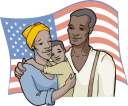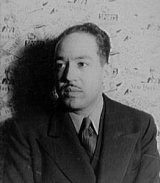
Worksheets and No Prep Teaching Resources
Reading Comprehension Worksheets
Black History and Blacks in U.S. History

Black History and Blacks in U.S. History
 Worksheets and No Prep Teaching Resources Reading Comprehension Worksheets Black History and Blacks in U.S. History |
 Black History and Blacks in U.S. History |
| edHelper's suggested reading level: | grades 6 to 8 | |
| Flesch-Kincaid grade level: | 7.97 |
|
Poets of the Harlem Renaissance
By Sharon Fabian |

|
 1 Poetry is a way of expressing your thoughts and feelings. It is a good way to say a lot with only a few words. Poets use rhyme and rhythm to hold their poems together and to make them more appealing to their readers. They use descriptive language and imagery to paint a picture for us with words. In school, we've all learned about some of the devices that poets use - similes, metaphors, repetition, onomatopoeia, and others.
1 Poetry is a way of expressing your thoughts and feelings. It is a good way to say a lot with only a few words. Poets use rhyme and rhythm to hold their poems together and to make them more appealing to their readers. They use descriptive language and imagery to paint a picture for us with words. In school, we've all learned about some of the devices that poets use - similes, metaphors, repetition, onomatopoeia, and others. |
Create Weekly Reading Books
Prepare for an entire week at once! |
| Leave your feedback on Poets of the Harlem Renaissance (use this link if you found an error in the story) |
 |
Black History and Blacks in U.S. History
|
 |
United States
|
|
|
 | Fifty States Theme Unit |
 |
Document Based Activities |